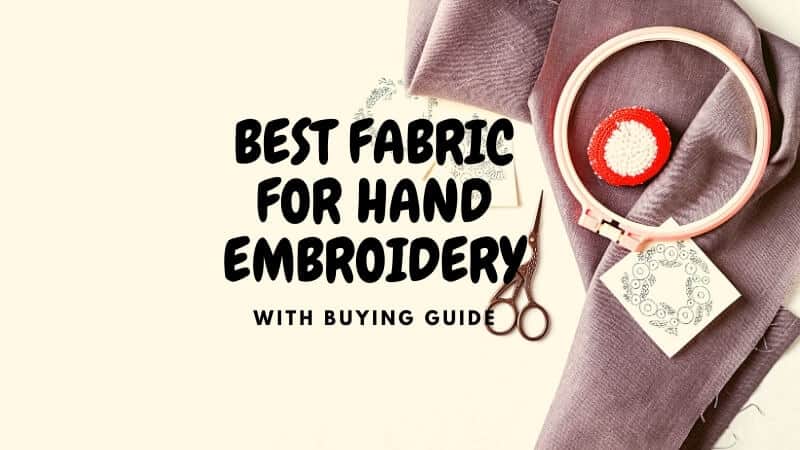6 Best Fabric for Hand Embroidery with Buying Guide
When you yearn for the best, you already know that not every fabric is supposed to deliver a satisfying outcome.
I mean, that’s the sole reason why there’s always a competition or a hype which derives the urge to make choices!
Hence speaking of embroidery, you can make it done even on a flat paper, but does that meet your standard of satisfaction? Or does all the fabrics resemble the same result?
Well, surely it’s a big No! So having a needle and few threads won’t be enough if you strive for the best and want to channel inclusive design.
Thus, after hours of researches and my fair share of experiences, I have lined up 6 best fabrics for embroidery, which are adorned by all the crafting embellishments and boons you were always craving for!
Let’s check them out!
6 Best Fabrics for Embroidery- Reviewed
I have narrowed down the top 6 fabrics from plenty of them. As you can see that there are many options, and every one of them seems too good to be true; hence, it’s obvious to feel baffled.
Thus, I have categorized each of them according to their attributes so that you can comprehend which fabric is best for what. Also, I would like to say that the reviews are entirely unbiased and channeled with ample research and information.
Let’s get started then!
1. Kissbuty White Cotton Fabric Cloth for Embroidery
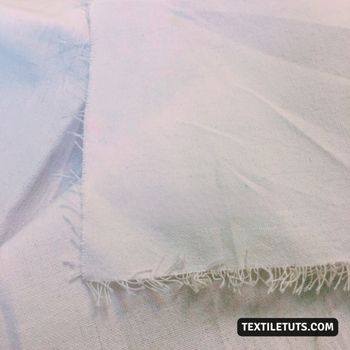
Features
- Material: 100% Cotton
- Pattern: Solid
- Item Dimension: 59 inch x 19.6 inch / (150 cm x 50 cm)
Here I have cotton needlework fabric provided by kissbuty, which is considered as one of the best fabric to retain the same density and quality even after perpetual machine wash. Besides, the permanency allows you to experiment from heavy to delicate needlework by delivering sufficient support.
Apart from these as you can see that this fabric is cotton made you can wholly rely on its caliber and ability to encounter an array of diverse embroideries. Initially, it opens the room for versatility and improvisation, whereas some of the trending fabrics fail to provide such flexibility. Moreover, the size of this fabric (Approx 59 inch x 19.6 inch) ensures that you can perform complicated projects without having to feel restricted.
Besides, you can experience a set of different applications such as needlepoint work, handbag, table cloth, wallet, needlepoint works cross stitch, needlepoint work, etc, which are universally used in day to day life.
PROS:
CONS:
2. Full Range of Embroidery Starter Kit
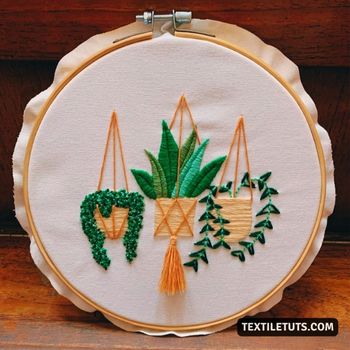
Features
- Material: Cotton
- Pattern: Pre-stamped Solid Patterns
- Item Dimension: Measured by yards
If you are a novice in embroidery but you are yearning to decorate your walls with some decorative needlework then, this full range of embroidery starter kit will bring your imagination into reality!
How, you ask?
Well, this particular package includes a bamboo hoop, a colorful spectrum of threads, 1pc cotton reverse Aida with a pre-stamped pattern, needles, and a guide to help you accommodate your stitching.
So! Here you are getting literally everything you need as a starter!
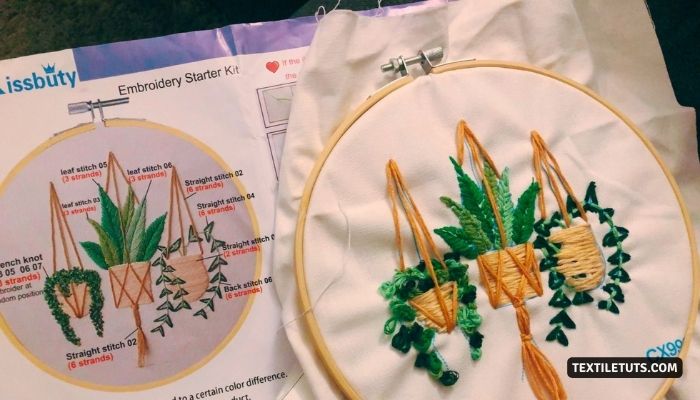
To commence your crafting journey, it can boost your confidence to engage in more intricate projects.
Here when you are working with this multipack fabric, you can enjoy the presence of its pre-designed floral pattern which will minimize half of your labor. Also, it will be an effective medium for practicing embroidery.
Moreover, it comes with a variety of 7 different colors, which are utterly bright to accentuate your design and beyond. Besides, the hoop is quite sturdy, accompanying a brass screw for adjusting the tightness intensity.
PROS:
CONS:
3. Muslin Fabric Natural 100% Cotton Fabric- Best for Stiffness
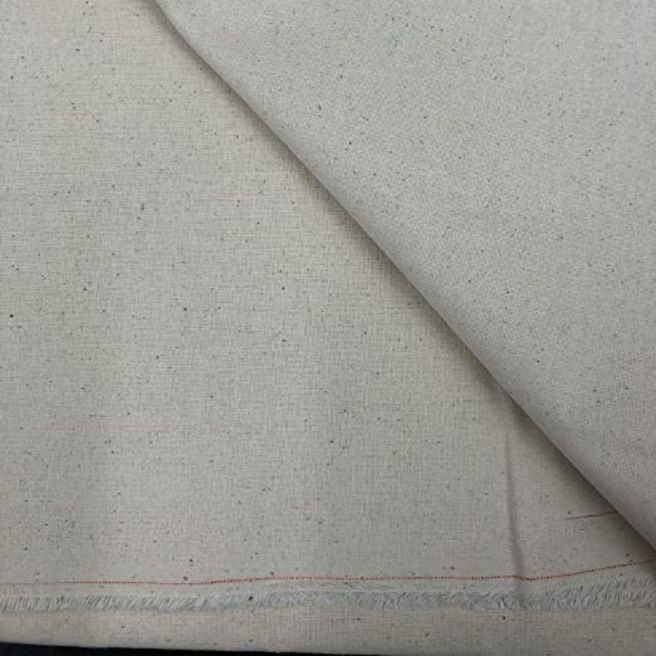
Features
- Material: Cotton
- Pattern: Solid
- Item Dimension: 9.72 x 8.94 x 1.38 inches
AK trading co-presents 100% cotton muslin fabric, which outshines many heavy-duty fabrics for its high stiffness quotient.
And the reason why its necessary to incorporate stiff fabrics to your project is nothing but the extended support.
Also, the stiffness parameter ensures the bending rigidity of certain fabric, which allows you to complete your work without including any standing support or firmness. Hence you can accomplish your needlework effortlessly.
In addition, the natural cotton content ensures supple and flawless operation every time.
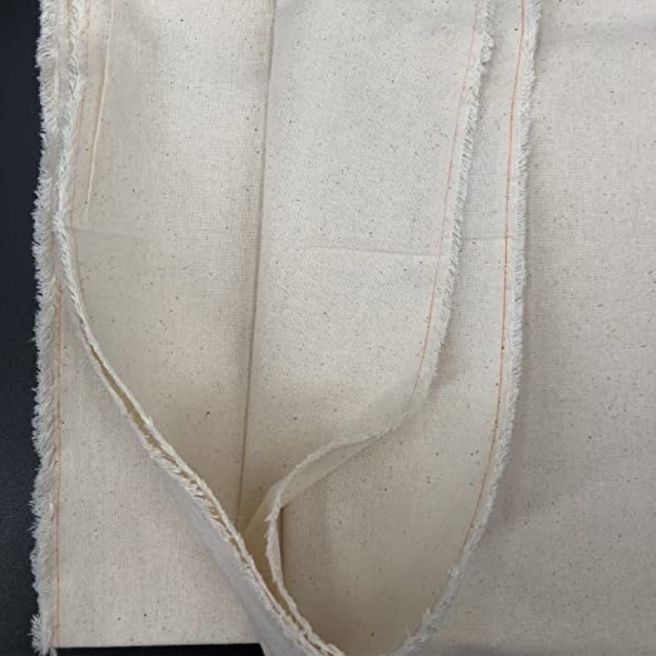
No matter if you are craving some dense embroidery or delicate needlework, this fabric will have your back.
Moreover, it has smooth hands so that your needle runs through the fabric swiftly and promotes more intricate and professional craftwork. Now, there is more than just embroidery!
You can use them for backdrops, fittings, draping, crafting curtains, aprons, sheets, quilting etc. lastly, if you are feeling reluctant to wash it after use, then rejoice! The fabric is absolutely machine washable and remains firm even after persistent wash. Just make sure you wash it in medium settings.
PROS:
CONS:
4. LOVOUS 100% Nature Linen Needlework Fabric- Best for DIY
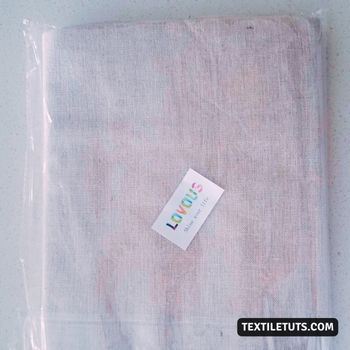
Features
- Material: Linen
- Pattern: Solid
- Item Dimension: 62.2 x 19.69 x 0.04 inches
Well, doing embroidery might be someone’s job to earn his bread, but over the decades, it has been the favorite pastime!
In fact, my enthusiasm for embroidery emerged from DIY’ing different decorative artworks. Now, the reason why I am preaching about DIY’s is that the LOVOUS linen fabric is best-suited for DIYs.
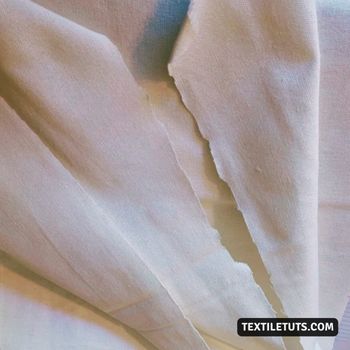
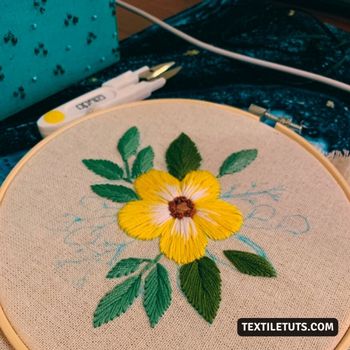
Also, the solid patterns and 100% natural linen content makes it best for different embroidery embellishments.
Here each of the pieces measures by 20-inch width by 62 inches long, which ensures a bigger space for crafting wider and denser patterns without having to confine in small artworks. Also, this fabric arrives in two different colors.
One of them is deep, and another one is lighter so that you are open to decide the appropriate ones for your embroidery. Moreover, the fabric has extreme durability to undergo complicated needlework and repeated washes.
PROS:
CONS:
5. Aida 5-Piece Cloth Cross Stitch Fabric
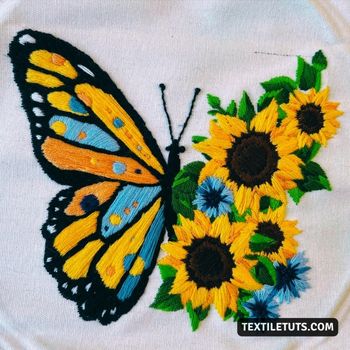
Features
- Material: Pure cotton
- Pattern: Solid
- Item Dimension: 12 x 12 inch
Aida cloth is widely cherished for its stiffness, open weaves, and capabilities to perform cross-stitch needlework.
This is a kind of embroidery that is quite complex and requires extreme flexibility while working.
Hence when you want to use a hoop to hold the fabric and keep your stitching tight and reinforced, it reduces the mobility to run your hands all wide.
That’s why Aida cloth is crucial if you really want cross-stitch embroidery to happen as it doesn’t require any hoop for the support! Also, the cloth harbors maximum stiffness to hold your stitches.
Besides, this cloth facilitates a natural mesh which prevents crinkles and wobbly operation. Here, it comes with the accurate cloth size (12 by 12inc) that is considered as the standard dimension for embroidery. Thus you don’t need to include any pre-cutting sessions.
PROS:
CONS:
6. Kissbuty 5 PCS Linen Fabric Cloth for Garment Craft
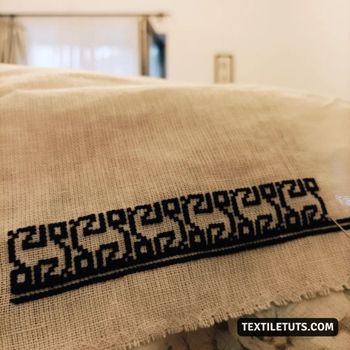
Features
- Material: Linen
- Pattern: Solid
- Item Dimension: 0.65 x 10 x 10 inches
Lastly, I have kissbuty’s 5pcs linen fabric cloth, which trumps over many expensive garments when it comes to applying decorative needlework.
The natural fiber content endorses dense filling of stitches without any seeming gaps or spaces. Hence when you are crafting a wall cloth for your room and longing some dense, colorful array of threads to form an alluring embroidery, this one should pop up in up in your mind. Initially, it renders amazing outcomes every time, even if you are a beginner.
Moreover, it comes with an optimal supply of clothes so that you can try different needlework.
Also, it saves up your money by providing enough quantity at once so that you don’t need to buy them separately at a significant wage.
Now, this fabric includes two color options, which are white and beige, as in a lighter and slightly deeper one to match your distinct requirements.
Additionally, as it’s made out of linen resistance and better maneuverability is certain in every aspect. Here if you are anticipating some tightly woven fabric, then linen might not be the one as it’s thinly dispersed.
Otherwise, you are empowered to perform different needlework such as cross-stitch, needlepoint work, accessories like handbags, wallets etc.
PROS:
CONS:
Buying Guide to Help Your Shop
Nothing compares to versatility and to attain that knowing the myth of thread counts, color combinations, and how they play along isn’t enough.
You can craft 10 different designs with a set of colors, yet it may look bland unless you start experimenting with different fabrics. But things feel quite perplexing when it comes to choosing the best fabric for your embroidery.
Because there’s a wide range of fabrics that accommodates embroidery anyways, but each of them distributes different end results.
To help you stumble upon the best fabrics, I have complied 5 crucial factors that you need to consider before making a purchase.
Let’s have a glance then!
What’s Your Resolution Here?
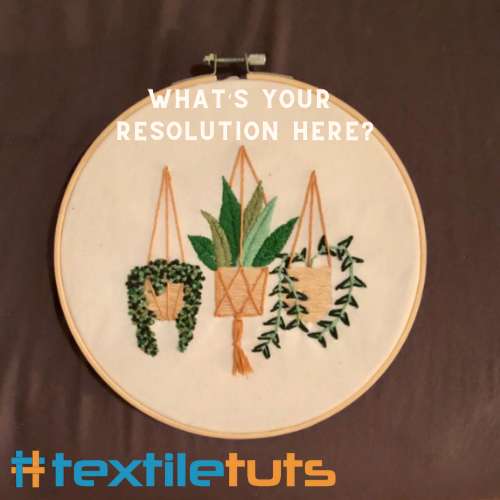
When you are searching for a competent fabric for your embroidery, you need to determine the “purpose” before anything else. Now you may want to stitch a fabric for decoration or hanging them on the wall.
Also, there are other decorative aspects such as embroidery wall mats, cushion covers, table cloths, sheets etc.
In contrast, you might be working on a dress where you want to add some blend of embroidery or an upholstery for covering your sofa set or chairs.
Here, when you determine the purpose of your operation, the rest of your shopping journey becomes easier than ever. Knowing your resolution will help you find the best-suited fabric for your project.
What’s Your Embroidery Type?
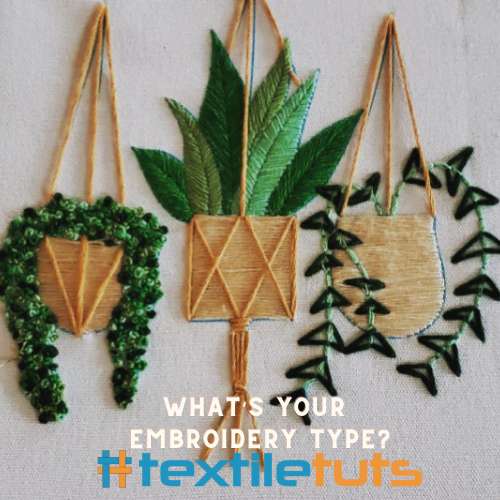
Secondly, you gotta hover contemplating the type of embroidery you intend to have on your desired fabric. It can be surface embroidery which incorporates curved and flowing lines.
In this case, you have to choose a fabric that delivers a seamless result along with smooth curved lines. Initially, it requires concealed spaces where the stitches are prone to be as close as possible without leaving a gap. And to acquire that the fabric should be a full weave.
Similarly, when it comes to delicate stitching, you need to choose a fabric that isn’t extensively rigid but flexible and easy to work with.
Make sure you don’t forget to consider this before coming to a halt as the type of your embroidery will directly influence the type of fabric you are willing to use.
What Type of Stitching Would You Prefer?
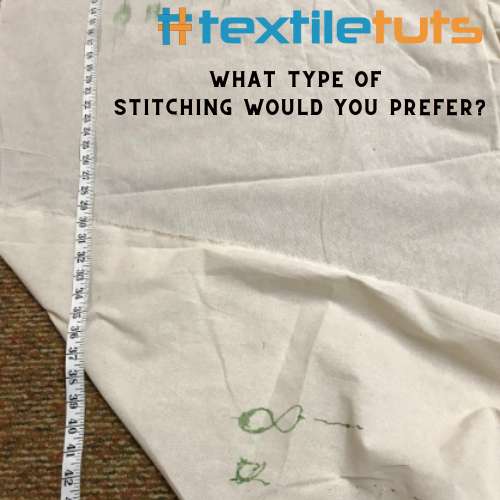
Personally, I always want my stitches with heavy fillings with no apparent gaps. The denser my stitching becomes, the livelier and solid it appears.
So, if you prefer dense stitching, then you certainly need a ground fabric that has that much sustainability to hold your stitches together or provide them ample support.
Needless to say that light, flimsy and docile fabric won’t yield that much resistance to keep your stitches in place for a prolonged time. For example, you can take embroideries (crewel) that associates wool threads and demands dense filling.
On the flip hand, if you are into delicate, light, and simple stitching, then using a heavy and high resistance fabric will be pointless.
Fabric Characteristics
Here are some fabric characteristics that you need to take into account before shopping!
Weave
When you are assessing the fabrics for your needlework, it’s important to decipher the weave type.
For instance, you might like a fabric that has a plain weave, whereas some people can count on twill or satin weave. Here it depends on how dense and reinforced the profile you prefer for your embroidery.
Now, a plain full weave is suitable for dense stitching with no visible gaps or irregular spaces. On the contrary, when you prefer a heavier ground fabric, you can switch on to twill.
Hand
In crafts, hand refers to the surface and the smoothness of fabric. Meaning when you are waving your hand on the surface, the sense of its smoothness ensures having a “good hand,” which is paramount for your needlework. Sometimes when you choose a fabric with rough hands, the needle and threads oppose to run through the fabric, or it feels lumpy.
Hence, you need to stick with a fabric with a smoother hand so that you can work with your heart’s content.
Quality of the Fiber
Evaluating the fiber contents will allow you to determine whether the needles can penetrate them effortlessly or not.
There are plenty of fabrics that are crafted with synthetic blends, and when you try to strike an arc on them, you will feel a lot of grains coming in your way as well as the sponginess will be problematic.
Also, synthetic or a mixture of synthetic fabric has that tendency to be caustic on threads. Hence I advise you to avoid synthetic fiber contents and adhere to natural ones!
Because, fabrics that are architected with natural fibers remain environment friendly and non-allergic to skin. Initially, clothes that you made out of natural fiber are comfortable to wear, and undoubtedly the needlework is straightforward and swift.
Here are some of the preferences which include silk, linen, wool, and cotton, or you can use the composites of each fiber.
Heaviness
Here the equation is pretty simple. Look, if you want some delicate work, then having light fabric will do the job for you, but when you are expecting to have some heavy needlework, the fabric should be able to support the stitches or capable of holding them together.
The sustainability of your fabric will ensure the righteousness of your needlework. Hence while choosing your fabrics, make sure you ponder over the type of embroidery you want.
Then choose a fabric with an appropriate weight that reciprocates well with your craft.
So that was all you need to speculate before buying the ideal fabric for your embroidery. I hope it helps.
Frequently Asked Questions
Let’s glance over some frequently asked questions.
What’s the best fabric for embroidery hoops?
Loosely woven fabrics.
Do I need bamboo hoops for Aida clothes?
Not necessarily. However, there are no downsides of using a hoop while embroidering, but when you are doing cross stitch with your Aida cloth, you can skip it.
What if my embroidery comes out after wash?
Well, it can be remedied in fact, you need to be cautious while choosing the fabric. If you are afraid of loose ends and prefer a seamless effect, then make sure you purchase a stiff cloth and avoid detergent wash.
What is the best fabric for embroidery applique?
Choose a fabric with natural fiber content which provides a tight weave. For example, you can try cotton, silk, wool, or linen.
Bottom Line
Indeed, you are too spoiled to choose one out of the magnitude of different options. But as I already mentioned that you need to invest a good time pondering the type of embroidery you are hoping to perform and the estimated expectancy as well.
So, make sure you know the requirement before shopping. Because once you become sure about your resolution, everything seems straight!
I hope this review helps!

